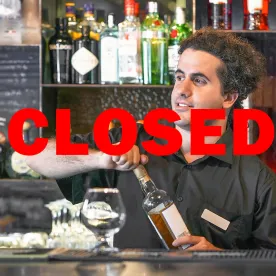On September 9, 2020, California Governor Newsom signed AB 1867. The new law provides for “gap” paid sick leave coverage for California employees who are otherwise exempt from emergency paid sick leave coverage provided under the federal Families First Coronavirus Response Act (“FFCRA”). In addition to providing paid leave, the law requires employers to comply with urgent-notice and posting requirements.
General Requirement
The new law is intended to act as “gap” paid leave for California employees who are employed by employers that are exempt under the federal Family First Response Care Act. The new California law applies to (1) employers with 500 or more employees; or (2) health care providers or emergency responders (working for a public or private entity of any size). The law provides for up to 80 hours of COVID-19 Supplemental Paid Sick Leave (“CSPSL”) for covered workers.
Covered Employers
The Act applies to private employers with 500 or more employees in the United States. For purposes of calculating the number of employees, “employees” includes: (i) all employees currently working, (ii) employees on leaves of any kind, (iii) employees of temporary placement agencies who are jointly employed under the Fair Labor Standards Act, and (iv) day laborers.
Alternatively, the obligation to provide CSPSL applies to public and private entities of any size with respect to any health care providers or emergency responders which the entity employs, which have been excluded from sick leave under the FFCRA.
Qualifying Reasons for Paid Sick Time
A covered employer must provide an employee supplemental paid sick leave under the Act for any of the following reasons:
-
The employee is subject to a federal, state, or local quarantine or isolation order related to COVID-19;
-
The employee is advised by a healthcare provider to self-quarantine or self-isolate due to concerns related to COVID-19; or
-
The employee is prohibited from working by the employer due to health concerns related to the potential transmission of COVID-19.
Note that unlike the federal leave requirement, this new law does not provide for paid leave for reasons related to school closures. Additionally, the law does not expressly provide for paid leave to take care of a family member who may have contacted Covid-19. However, the law obligates an employer to provide CSPSL if an employer has a policy or practice of requiring that an employee self-isolate from the employer’s physical workspace due to risk of potential transmission after close contact with an individual diagnosed with Covid-19.
The law is silent with respect to employees who are required to self-isolate but are capable of telecommuting. This analysis will have to be undertaken on a case-by-case basis.
Covered Full-Time Employees
An employee qualifies for the full 80 hours of CSPSL if the employee satisfies either of the following criteria:
-
The employer considers the employee to work “full time”; or
-
The employee worked or was scheduled to work, on average, at least 40 hours per week for the employer in the two weeks preceding the date the employee took CSPSL.
Covered Part-Time Employees
For part-time employees the minimum amount of CSPSL is calculated as follows:
-
If the employee has a normal weekly schedule, the total number of hours the employee is usually scheduled to work for the employer over two weeks;
-
If the employee works a variable number of hours, 14 times the average number of hours the employee worked each day in the six months prior to taking COVID-19 supplemental paid sick leave or, if the employee has been employed for less than six months, over the entire period the employee has worked for the employer; or
-
If the employee works a variable number of hours and has worked for the employer over a period of 14 days or fewer, the total number of hours the employee has worked.
Supplemental to Regular Paid Sick Leave Already Provided/ Retroactive Designation
CSPSL must be provided in addition to any paid sick leave the employer already provides to employees. An employer may not require an employee to first use other paid leave provided by the employer.
However, if an employer previously provided employees with leave for CSPSL reasons described above (separate or in addition to regular paid-sick leave), and which compensated the employee at an amount equal to or greater than what CSPSL requires, the employer may count the hours of the other paid benefit or leave towards the total number of hours CSPSL.
If an employer provided non-compensated COVID-19 related leave separate or in addition to regular paid-sick leave), the employer will have the option of retroactively compensating the covered worker to satisfy the Act’s compensation requirements. Upon compensation, an employer will be able to credit these hours towards CSPSL requirements.
Compensation for Paid Sick Time
Employees using COVID-19 supplemental paid sick leave must be compensated at their regular rate of pay for their last pay period.
Notice Requirements
The Labor Commissioner has posted the following model notices that an employer must display that explains the nature of CSPSL.
Food Sector Workers - https://www.dir.ca.gov/dlse/COVID-19-Food-Sector-Workers-poster.pdf
Non-Food Sector Workers - https://www.dir.ca.gov/dlse/COVID-19-Non-Food-Sector-Employees-poster.pdf
The Bill requires that the notice must be posted at workplaces before September 19, 2020. Therefore, applicable companies that have not done so yet must do so as soon as practicable.
Alternatively, the bill provides that if an employer’s employees do not frequent the workplace, then it may disseminate the notice through electronic means, such as by email.
Employers must also provide notice in a wage statement (or a separate writing provided on pay day) of an employee’s available CSPSL each pay period. That requirement takes effect in the first pay period following the date of enactment.
Expiration of the Law
The requirement to provide COVID-19 supplemental paid sick leave expires on December 31, 2020, or upon the expiration of any federal extension of the Emergency Paid Sick Leave Act (whichever is later).
Food-Sector Employers
In April of 2020, Governor Newsom signed Executive Order (EO) N-51-20, which provided CSPSL for food sector workers. In large part, AB 1867 codifies the executive order’s language. However, AB 1867 differentiates from the prior Executive Order in a couple of ways. First, AB 1867 provides the aforementioned expiration period whereas the executive order was to be applicable only during the pendency of the statewide stay-at-home order. Additionally, AB 1867 clarified that that “food facilities” are defined as all entities codified under California Health and Safety Code section 113789. Additionally, AB 1867 codifies food-sector employer’s obligation to permit employees to wash their hands every 30 minutes.




 />i
/>i

